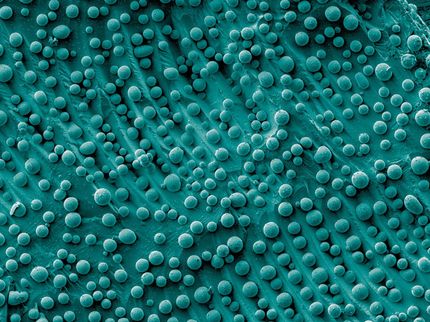National Nanotechnology Initiative releases new strategic plan
A new strategic plan for the work of the National nanotechnology Initiative has just been released by the interagency Nanoscale Science, Engineering, and Technology (NSET) Subcommittee of the National Science and Technology Council's Committee on Technology with support from the National Nanotechnology Coordination Office (NNCO). The 2007 NNI Strategic Plan describes the vision, goals, and priorities of the NNI to ensure that the United States derives growing economic benefits and improved quality of life for its citizens and remains a global leader in nanotechnology R&D in the years to come.
According to NNCO Director Clayton Teague, periodic reexamination of the NNI Strategic Plan is essential, given the dynamic nature of the field. The 21st Century Nanotechnology Research and Development Act of 2003 calls for the NNI Strategic Plan to be updated every third year; the plan just released updates and replaces the December 2004 plan.
"This strategic plan presents an overview of the NNI for the public and will facilitate achievement of the NNI vision by offering guidance for agency leaders, program managers, and the research community in their nanotechnology R&D investments and activities," said Dr. Teague. He noted that the new plan reflects the consensus of the 25 NNI participating agencies as to the goals and priorities of the NNI and provides a framework within which each agency will carry out its own mission-related nanotechnology programs, as well as a path that will sustain coordination of interagency activities. In addition to specifying high-level goals, the plan identifies activities aimed at accomplishing those goals. The plan also identifies major subject areas, or program component areas (PCAs), in which investments are needed to ensure the success of the initiative. Finally, the plan identifies a number of representative high-impact application opportunities that cut across the NNI program component areas and that align with the competencies and missions of participating agencies.
A number of inputs guided the Strategic Plan update, Dr. Teague noted. Among them were independent reviews of the NNI by the President's Council of Advisors on Science and Technology and the National Research Council of the National Academies, both of which have been strongly supportive of the NNI and have offered specific recommendations for improving NNI strategies and operations. Additional input has come from topical workshops sponsored by the NNI, in which academic, government, and industry experts developed research recommendations for a variety of application areas, considered societal implications of nanotechnology, and addressed economic development strategies.
In reviewing the basic elements of the existing strategic plan, the NSET Subcommittee found many aspects still relevant and appropriate. However, a number of modifications have been made to reflect progress that has taken place since 2004 and to emphasize and clarify the significance that nanotechnology advances will have for the nation.
Among the changes in the new strategic plan is the division of the 2004 Societal Dimensions PCA into two PCAs in the updated plan, one titled Environment, Health and Safety and one titled Education and Societal Dimensions. This change aligns with budget reporting practices since 2006, according to Dr. Teague. A second major change to the strategic plan is the addition of a number of exemplary, high-impact application opportunities and critical research needs. "The opportunities and needs are visionary, yet realistic," Dr. Teague said, cutting across the NNI program component areas, and aligning with the competencies and missions of multiple participating agencies. These illustrative examples highlight the range of cutting-edge research and the variety of areas in which nanotechnology will transform industrial sectors and society.
Commenting on the achievements of the NNI and growth of the field, Dr. Teague noted that although the NNI and nanotechnology itself are still young - and translating an emerging technology into economically viable products usually takes decades - nanotechnology innovation and product development are under way. As evidence, he cited the more than 4800 patents identified to date under the nanotechnology classification created by the U.S. Patent and Trademark Office, many of which draw upon NNI-supported research.
"The NNI has created a thriving nanoscale science and engineering R&D environment within the United States," Dr. Teague said, noting the 70 research and user facilities established and supported by the NNI since its beginning. "As a result, scientific understanding of nanometer-scale phenomena has expanded enormously. An extensive network of R&D centers is already established."
Building on this progress, Dr. Teague noted that "exploiting the full value that nanotechnology offers depends on sustained R&D. Barriers to innovation and technology transfer need to be lowered. Researchers, educators, and technicians with new skills are required. Furthermore, nanotechnology must be developed responsibly. "






























































